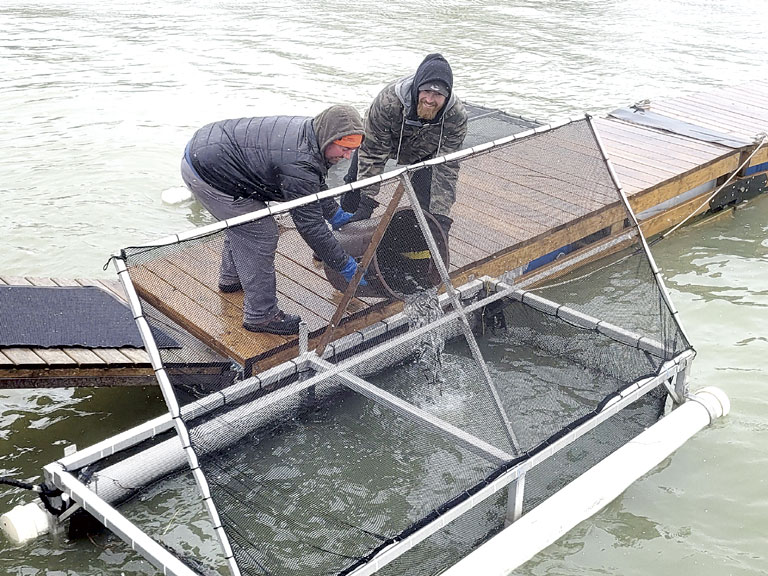County News
Restocking

Chinook salmon and brown trout take up residence in Wellington
Italicized paragraphs from Kathryn Peiman’s article found at https://thenarwhal.ca/lake-ontario-fish-salmon-trout/
Spring has arrived, which means migration and spawning season for many fish native to Lake Ontario. In 1873, the federal government began stocking the lake with non-native salmon, starting with Chinook salmon. Coho salmon, steelhead, and brown trout soon followed.
At first the fish didn’t thrive. This limited natural reproduction of stocked non-native species. It was also devastating for native species. combined with over-harvesting, environmental harm caused the decline of some, like brook trout, and the wholesale loss of others, like Atlantic salmon.
Stocking of fish in Lake Ontario resumed in the late 1960s. By the early 2000s all introduced species were reproducing naturally. Most of these fish are from the wild, not hatchery- raised. Over half of Lake Ontario’s chinook and coho salmon are wild, and some streams have entirely wild runs. While these fish aren’t native to Lake Ontario, they’re now an important part of the ecosystem, bringing lake-derived nutrients upstream.
Last week, 25,000 chinook salmon fingerlings made Wellington Harbour their home for the next few weeks. At the end of their stay, they will be towed out of the channel and into the big lake to be set free. Jesse Platt, Dave Ashton, and a host of volunteers were on hand to help stock the pens last Thursday. Volunteers will be visiting the pens throughout their stay, feeding and monitoring the fingerlings.
“We started this in 2003 and missed one year because of Covid, but it’s been a great program to be a part of,” said Ashton. Not shy about telling an old fishing tale, he hopes in future years, to be lucky enough to reel in some of the salmon that called the harbour home once they have matured.
The chinook preys on invasive species like the alewife. Chinook is also a popular fish for fisheries, and the fry improve the economy for fisheries around Lake Ontario. Those fishing the chinook also help out MNR in another way.
Ashton explained that years ago, shad and alewife were washing up on Lake Ontario shores. The Ministry went to work creating a predator-prey balance, introducing the chinook to help offset that from occurring. “Wellington was first to start this program,” says Ashton. “Now there are 10 other location on the north shore of the lake, as far west as Oshawa, and heading down further east as well.”
The salmon stay at the marina for a few weeks to get an imprint. As fry, they learn a particular location so that when they are ready to spawn, they know where to return. The surviving chinook will revisit the marina in three years to spawn. But it’s not sustainable: the winter freeze kills off much of the roe and there are very few wild young.
New this year, was the introduction of 20,000 brown trout off the shore of Wellingon Beach, directly into Lake Ontario.
Ashton explained that the Lake Ontario Management Unit us trying to create a near-shore fishery, meaning folks with kaykas or small boats can go out in 10 feet of water and catch fish.
Brown trout are an important component of the Lake Ontario fishery, throughout the fishing season, and in all management areas. They are often the primary species targeted during the spring fishing season (April/May).
“It encourages recreational fishing, gets people educated and encourages them to buy a fishing license,” said Ashton.
Dr

Comments (0)